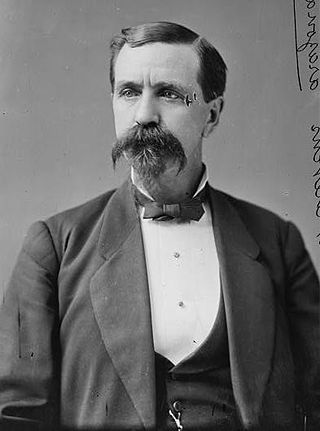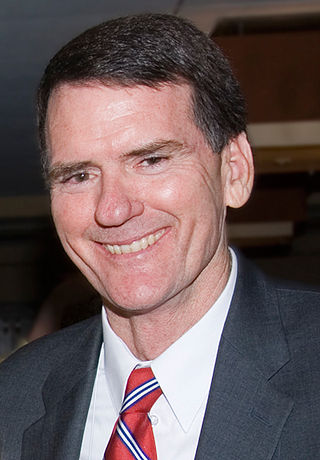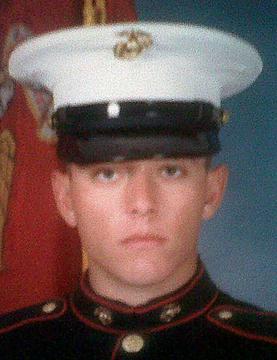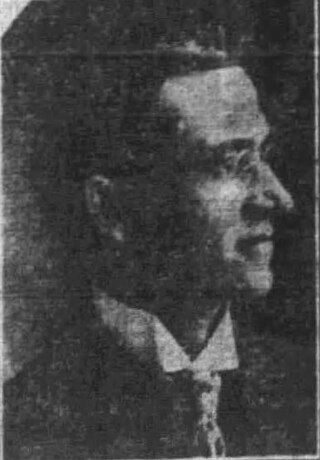
Tucson is a city in and the county seat of Pima County, Arizona, United States, and is home to the University of Arizona. It is the second-largest city in Arizona behind Phoenix, with a population of 542,629 in the 2020 United States census, while the population of the entire Tucson metropolitan statistical area (MSA) is 1,043,433. The Tucson MSA forms part of the larger Tucson-Nogales combined statistical area. Both Tucson and Phoenix anchor the Arizona Sun Corridor. The city is 108 miles (174 km) southeast of Phoenix and 60 mi (100 km) north of the United States–Mexico border.

The Arizona Daily Star is an American daily newspaper based in Tucson, Arizona, and owned by Lee Enterprises. It serves Tucson and surrounding districts of southern Arizona in the United States.

Old Tucson is an American movie studio and theme park just west of Tucson, Arizona, adjacent to the Tucson Mountains and close to the western portion of Saguaro National Park. Built in 1939 for the movie Arizona (1940), it has been used for the filming location of many movies and television westerns since then, such as Gunfight at the O.K. Corral (1957), Rio Bravo (1959), El Dorado (1966), Little House on the Prairie TV series of the 1970s–1980s, the film Three Amigos! (1986) and the popular film Tombstone (1993). It was opened to the public in 1960 as a theme park with historical tours offered about the movies filmed there, along with live cast entertainment featuring stunt shows, shootouts, can-can shows as well as themed events. It is still a popular filming location used by Hollywood.

The Hotel Congress is a federally-recognized historic building located in downtown Tucson. It was built in 1918 and designed by the Los Angeles architectural firm William and Alexander Curlett as part of an expansion of Congress Street and in conjunction with the theatrical venue Rialto Theatre, which sits north of Congress Street. The rear of the building faces the historic Amtrak Southern Pacific train station, built by Southern Pacific in 1907. In addition to being a hotel, the Hotel Congress building also houses a restaurant, bar and music venue. The name "The Congress Hotel" was chosen through a naming competition organized by the Arizona Daily Star newspaper in 1918. The winning suggestion was announced on April 30, 1918, and it was submitted by Dorit Dinkel, who won $15 worth of baby bonds for having their name chosen. The Hotel Congress and its owners since 1985, Richard Oseran and Shana Oseran, have been a key cultural institution and boosters in the early 21st Century redevelopment of Downtown Tucson.

Frank C. Stilwell was an outlaw Cowboy who killed at least two men in Cochise County during 1877–82. Both killings were considered to have been self-defense. For four months he was a deputy sheriff in Tombstone, Arizona Territory for Cochise County Sheriff Johnny Behan. Stilwell owned interests in several mines and various businesses, including a saloon, a wholesale liquor business, a stage line, and at his death livery stables in Charleston and Bisbee. He was also a partner in a Bisbee-area saloon with ex-Texas Ranger Pete Spence.
El Con Center is an open-air shopping mall in the city of Tucson, Arizona, United States anchored by Cinemark Theatres, Target, The Home Depot, Walmart, Ross (30,220 ft.2), Burlington (65,680 ft.2), and Marshalls. There is 1 vacant anchor store that was once JCPenney. The oldest mall in metropolitan Tucson, El Con Mall, as it was known since its opening in 1960, was renamed in May 2014 at the time of its sale for $81.7 million to Stan Kroenke, owner of numerous sports properties including Arsenal F.C. and the Los Angeles Rams.

Hiram Sanford Stevens was an American businessman and politician. He served two terms as Arizona Territory's delegate in the United States House of Representatives and three times in the Arizona Territorial Legislature.
Roy Place was a Tucson, Arizona architect.

The Wham Paymaster robbery was an armed robbery of a United States Army paymaster and his escort on May 11, 1889, in the Arizona Territory. Major Joseph W. Wham was transporting a payroll consisting of more than US$28,000 in gold and silver coins from Fort Grant to Fort Thomas when he and his escort of eleven Buffalo Soldiers were ambushed. During the attack, the bandits wounded eight of the soldiers, forced them to retreat to cover and stole the payroll.

John McCarthy Roll was a United States district judge who served on the United States District Court for the District of Arizona from 1991 until his murder in 2011, and as chief judge of that court from 2006 to 2011. With degrees from the University of Arizona College of Law and University of Virginia School of Law, Roll began his career as a court bailiff in Arizona and became an assistant city attorney of Tucson, Arizona in 1973. Later that year, Roll became a deputy county attorney for Pima County, Arizona until 1980, when he began serving as an Assistant United States Attorney for seven years. President George H. W. Bush appointed Roll to a federal judge seat in Arizona after Roll served four years as a state judge.

David Brian Stidham was a pediatric ophthalmologist stabbed to death in Catalina Foothills, Arizona as the result of a murder-for-hire plot that stemmed from a colleague's professional jealousy. Bradley Alan Schwartz, also a pediatric ophthalmologist, and Ronald Bruce Bigger, a hit man, were arrested and convicted for the murder.

Charles A. Shibell was a teamster, miner, hotel owner, customs inspector, recorder, and Pima County, Arizona County Sheriff and a contemporary of Wyatt Earp and his brothers. Shibell promised a job as Deputy Sheriff to Earp, but when Earp announced his support for Bob Paul as the next sheriff, Shibell appointed Earp's antagonist Johnny Behan to the position instead.

Jose Guerena was a U.S. Marine veteran who served in the Iraq War and who was killed in his Tucson, Arizona, home on May 5, 2011, by the Pima County Sheriff's Department SWAT team. Deputies were executing a warrant to search Guerena's home while investigating a case involving marijuana being smuggled into the U.S. from Mexico.

The Bank of America Plaza is a high-rise office building which was built in 1977 and is located in downtown Tucson, Arizona. It was designed by Friedman & Jobusch and built by DEFCO Construction Company. It took over the top spot from the Pima County Legal Services Building, which was the tallest building from 1967 to 1977. It was the tallest building in Tucson from the time of its completion in 1977, until 1986, when the UniSource Energy Tower was completed. It is located at 33 North Stone Avenue, at the southwest corner of Stone Avenue and Pennington Street. The Bank of America Plaza is one of three major skyscrapers in the downtown Tucson area that compose the highest part of the city's skyline, the other two being the One South Church and the Pima County Legal Services Building.
Gary Lee Triano was a millionaire real estate developer from Tucson, Arizona who was killed in Catalina Foothills by a pipe bomb explosion in his Lincoln Town Car on November 1, 1996. His former wife, Pamela Anne Phillips, a one-time model, real estate agent, and socialite, was charged with orchestrating her ex-husband's death. In a sensational trial nearly 18 years after Triano's murder, Phillips was convicted of first-degree murder and conspiracy to commit murder and was sentenced to life in prison. Phillips, who is now incarcerated at the Arizona State Prison Complex – Perryville, claims that Triano's death was a mob revenge killing. Ronald Young, who was hired by Phillips as a hit man, was also convicted and sentenced to life in prison.

George James Roskruge was the surveyor general of Arizona Territory from 1896 to 1897. Born in England, he emigrated to the United States in his mid-20s and became a naturalized citizen in 1876. He spent most of his life in Tucson, Arizona, where he held many prominent positions and is considered a city pioneer. He was an expert rifleman and is called the "father of Masonry" in Arizona.

John T. Hughes was a politician from Arizona who served in the 1st Arizona State Legislature. He was also a newspaper man, editing and publishing his father's paper, the Arizona Daily Star, and an attorney, the first native-born Arizonan to be admitted to the Arizona bar. Additionally, he had several mining and real estate interests.















